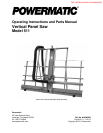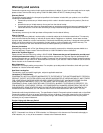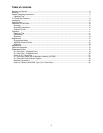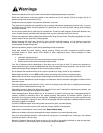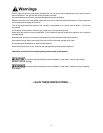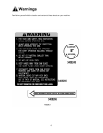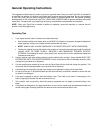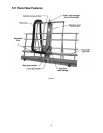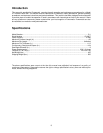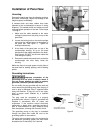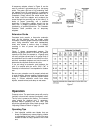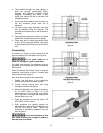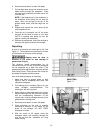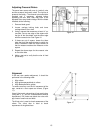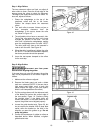7
General Operating Instructions
The suggestions listed below are meant to give you a general idea of how your new Panel Saw is intended to
be operated. No amount of instruction can replace good common sense and experience. Be sure the operators
of your new Panel Saw are given enough time and material to become familiar with the general operating
characteristics of this machine and have FULLY READ AND UNDERSTAND all general operating and safety
instructions. The panel saw is pre-aligned at the factory. No assembly or adjustments are necessary.
NOTE: When your Panel Saw is located in position for operation, secure the machine in a manner that will
prevent it from being tipped over.
Operating Tips
1. If you expect smooth, clean, chip-free cuts, follow these tips:
• Use industrial carbide saw blades which are SHARP. Dull blades or improperly sharpened blades will
cause chipping, unclean cuts, chatter and will overload the saw motor.
• NOTE: ALWAYS USE A SHARP SAW BLADE. IF IN DOUBT REPLACE IT WITH A NEW BLADE.
• Feeding the material through the machine horizontally or moving the saw carriage through the material
vertically MUST BE DONE SLOWLY, SMOOTHLY AND WHENEVER POSSIBLE WITHOUT
STOPPING. Overfeeding will result in poor quality cuts, shorten the life of the carbide saw blades and
overload the saw motor.
2. Caution must be used when setting material onto the material roller carriage. Heavy material MUST NOT
BE DROPPED ONTO THE ROLLER CARRIAGE. Failure to follow this rule will ultimately cause the roller
carriage to be pounded out of alignment.
3. For best results place material to be cut onto the Panel Saw with the back side facing the operator. This
will provide the smoothest possible cut on the face side of the panel.
4. Panels being cut horizontally (ripping) must always be fed against the rotation of the saw blade.
5. Do not force the saw. It will perform better and can be more easily controlled if allowed to work at the rate
for which it was designed.
6. If the saw is stopped in mid-cut, allow the blade to stop. Then back up the saw (if crosscutting) or the
board (if ripping) and restart the saw to continue the cut.
7. Thin material, such as paneling, should be properly supported over its length to prevent binding in the
blade.
8. Panel Saws are designed to cut large panels down to size. As the overall panel size becomes smaller and
smaller other types of sawing machines can become more convenient and safer to use.



